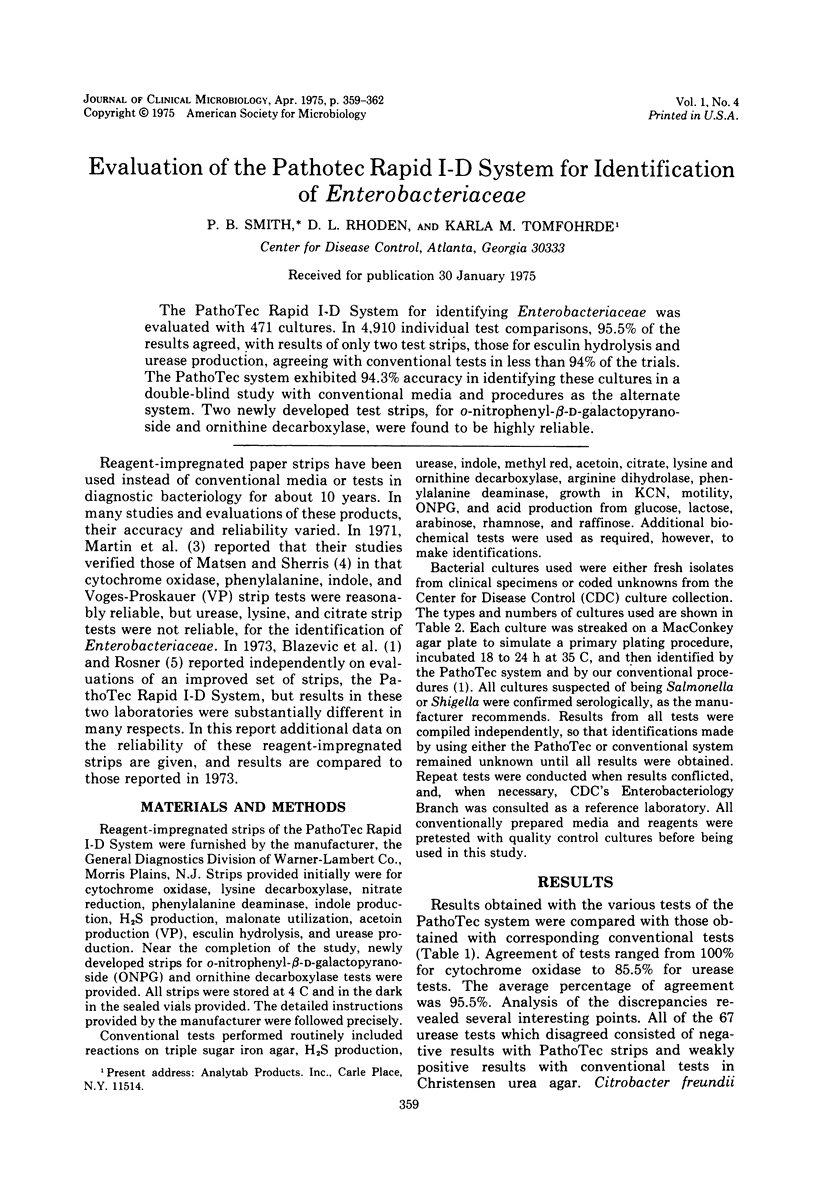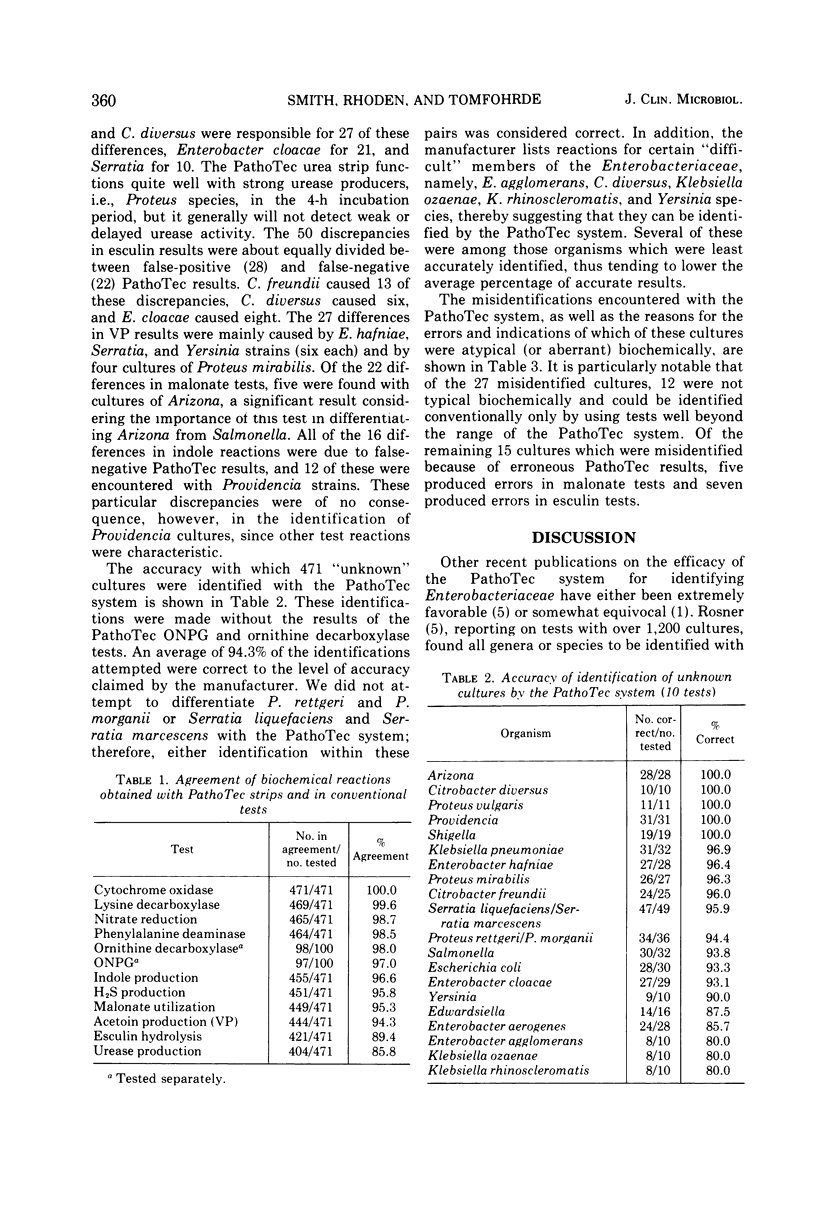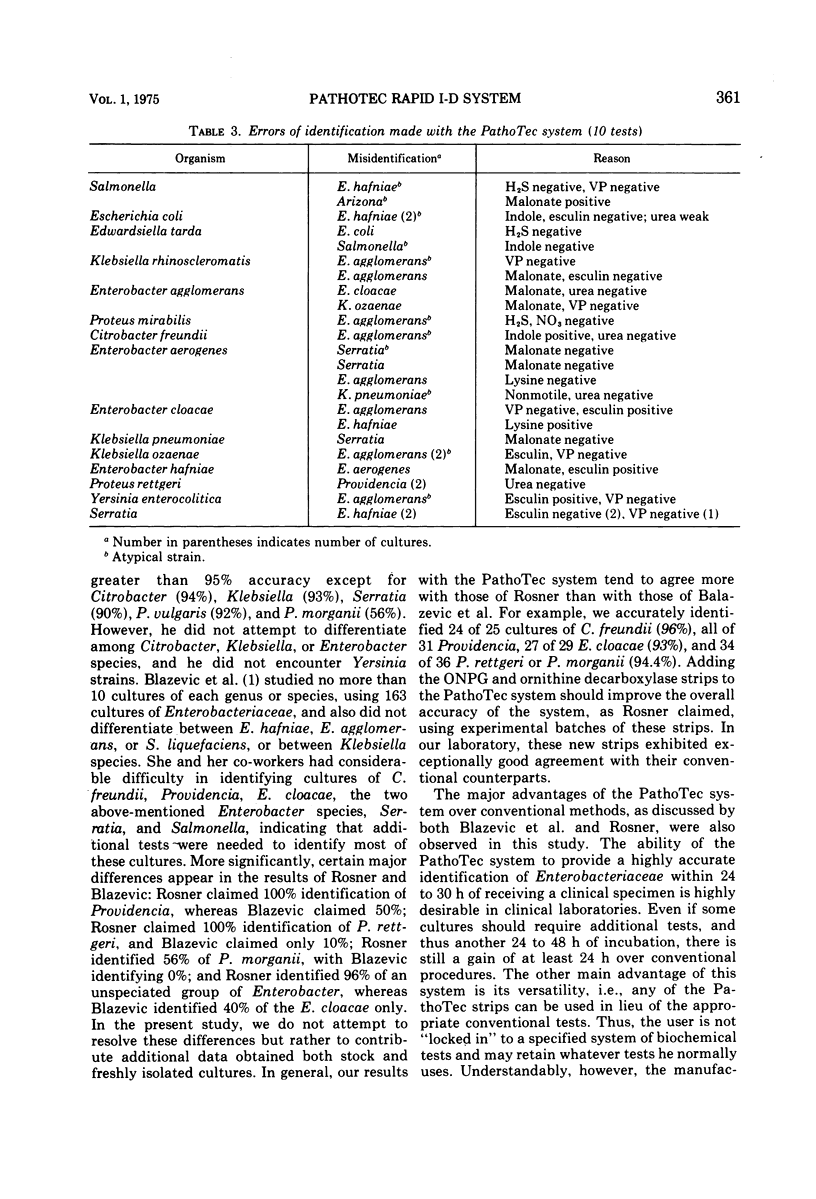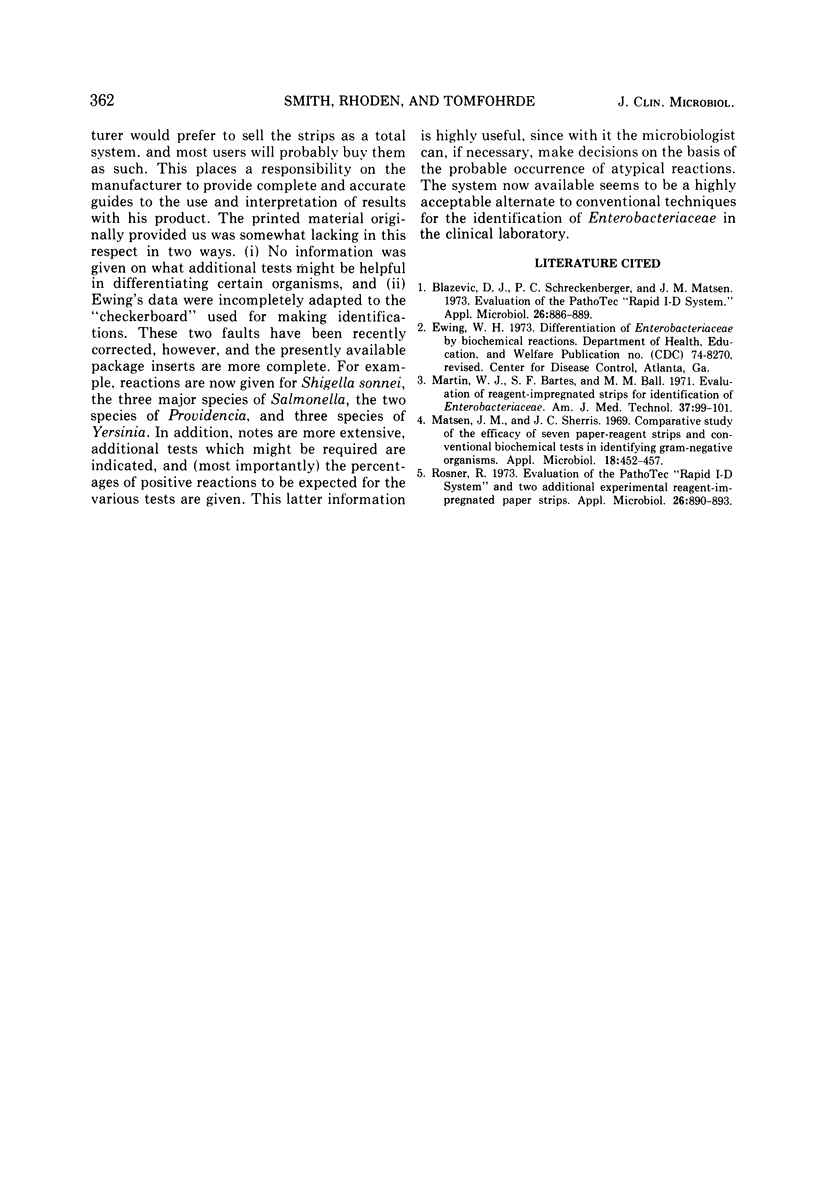Abstract
The PathoTec Rapid I-D System for identifying Enterobacteriaceae was evaluated with 471 cultures. In 4,910 individual test comparisons, 95.5% of the results agreed, with results of only two test strips, those for esculin hydrolysis and urease production, agreeing with conventional tests in less than 94% of the trials. The PathoTec system exhibited 94.3% accuracy in identifying these cultures in a double-blind study with conventional media and procedures as the alternate system. Two newly developed test strips, for 0-nitrophenyl-beta-D-galactopyranoside and ornithine decarboxylase, were found to be highly reliable.
Full text
PDF



Selected References
These references are in PubMed. This may not be the complete list of references from this article.
- Blazevic D. J., Schreckenberger P. C., Matsen J. M. Evaluation of the PathoTec "Rapid I-D System". Appl Microbiol. 1973 Dec;26(6):886–889. doi: 10.1128/am.26.6.886-889.1973. [DOI] [PMC free article] [PubMed] [Google Scholar]
- Martin W. J., Bartes S. F., Ball M. M. Evaluation of reagent-impregnated strips for identification of Enterobacteriaceae. Am J Med Technol. 1971 Mar;37(3):99–101. [PubMed] [Google Scholar]
- Matsen J. M., Sherris J. C. Comparative study of the efficacy of seven paper-reagent strips and conventional biochemical tests in identifying gram-negative organisms. Appl Microbiol. 1969 Sep;18(3):452–457. doi: 10.1128/am.18.3.452-457.1969. [DOI] [PMC free article] [PubMed] [Google Scholar]
- Rosner R. Evaluation of the PathoTec "Rapid I-D System" and two additional Experimental reagent-impregnated paper strips. Appl Microbiol. 1973 Dec;26(6):890–893. doi: 10.1128/am.26.6.890-893.1973. [DOI] [PMC free article] [PubMed] [Google Scholar]


